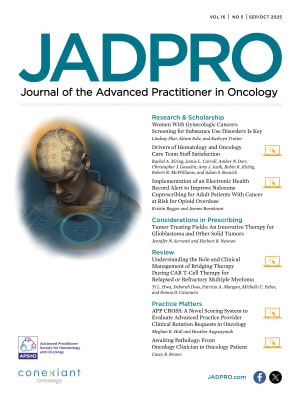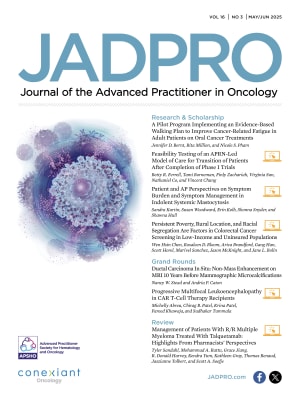Abstract
Background: Advance care planning (ACP) is an important aspect of care for the oncology patient population, leading to improved outcomes, less aggressive care toward the end of life, and reduced costs. Purpose: The objective of this project was to increase ACP discussions and easily accessible documentation for patients with hematologic malignancies at increased risk of mortality based on a mortality prediction model. Additionally, the project aimed to avoid increasing perceived provider disruption to workflow. Methods: A validated mortality prediction model utilized objective patient data to predict inpatient mortality. Providers caring for at-risk patients were notified, asked to consider an ACP discussion, and instructed on consistent and easily accessible ACP documentation. Retrospective chart reviews evaluated whether ACP discussions were documented and whether they used the suggested bookend format. After 4 months, a provider education session reinforced the importance of ACP and included a demonstration of the documentation process. After another 4 months, chart reviews assessed ACP documentation rates. Rates were compared before and after education to determine the effectiveness of the implementation. A provider survey assessed perceived disruption to workflow. Results: Fifteen at-risk patients (eight before the education session and seven after the education session) were identified over 8 months. Three of eight patients (37.5%) had a documented ACP before the education session, and three of seven patients (42.9%) had a documented ACP discussion after the education session, which was not statistically significant. Most providers (83%) did not find the ACP implementation disruptive to workflow. Advance care planning documentation did not significantly increase after a provider education session, possibly due to low numbers of identified patients. However, 43% of at-risk patients after the education session had a documented ACP conversation, and most providers found bookends an efficient way to document ACP. Conclusion: The survey findings suggest that the project received provider buy-in and that continuing the bookend documentation expectation is reasonable.







